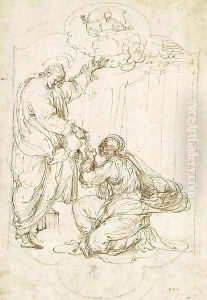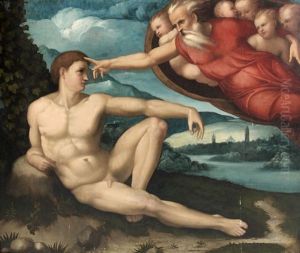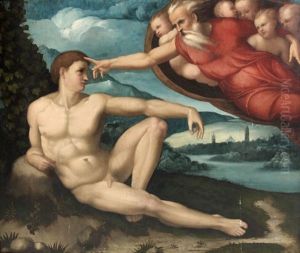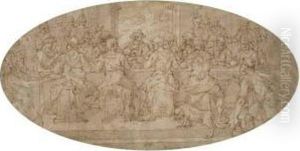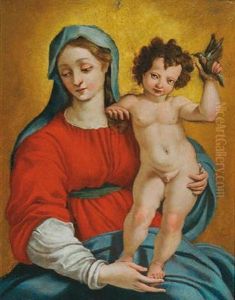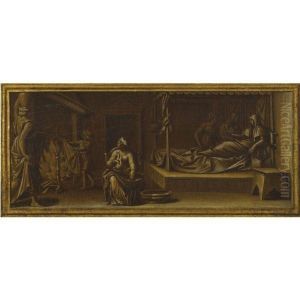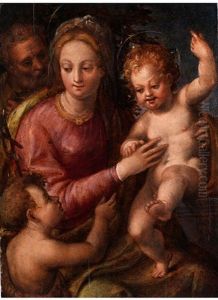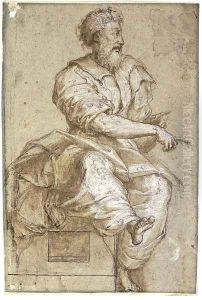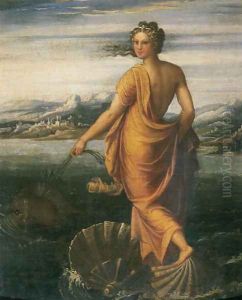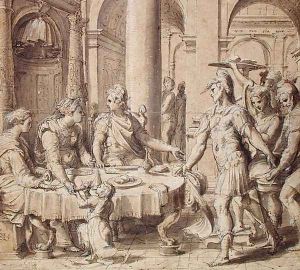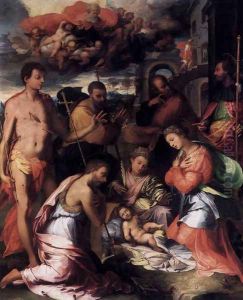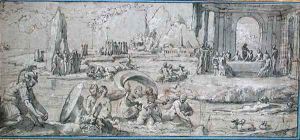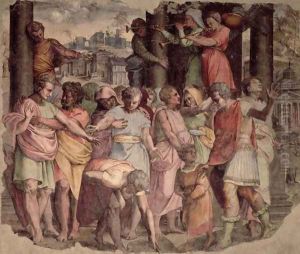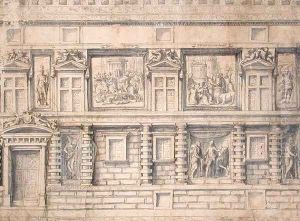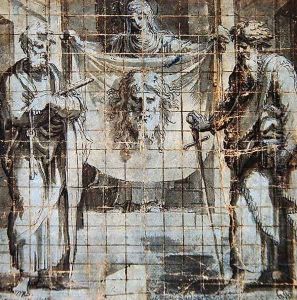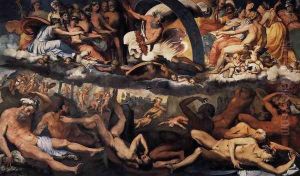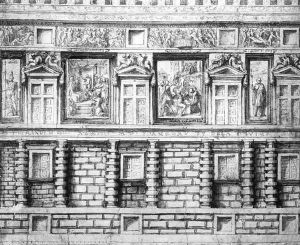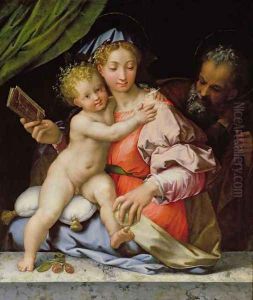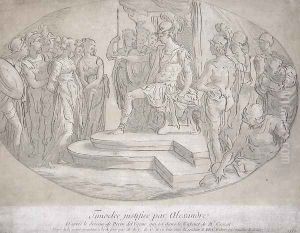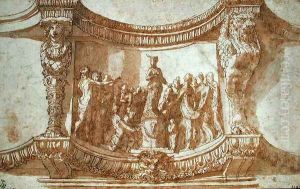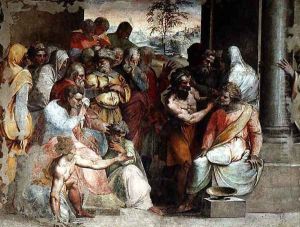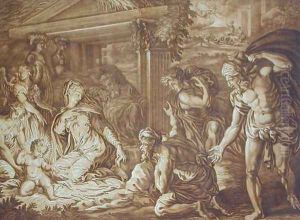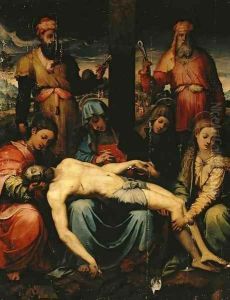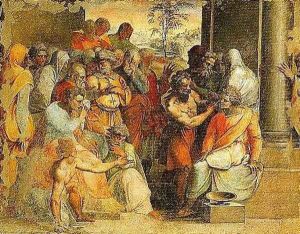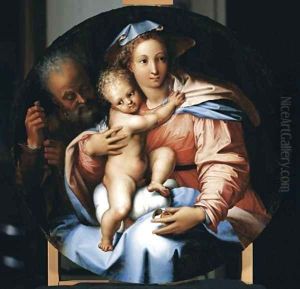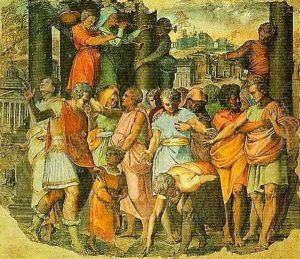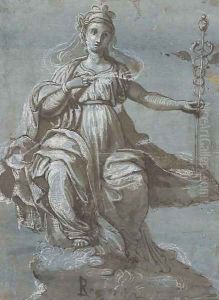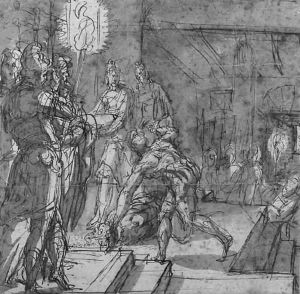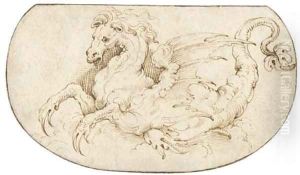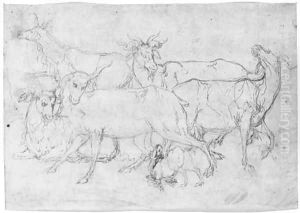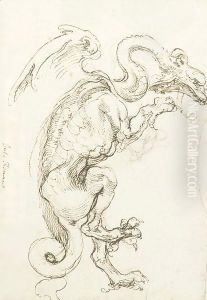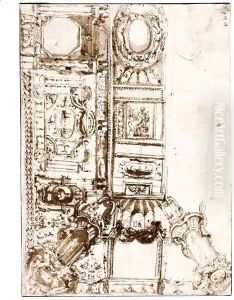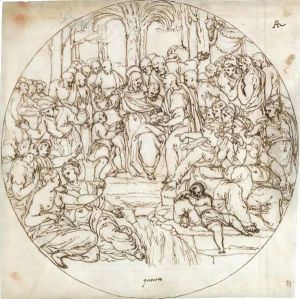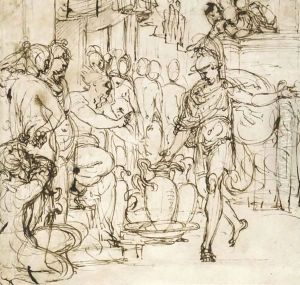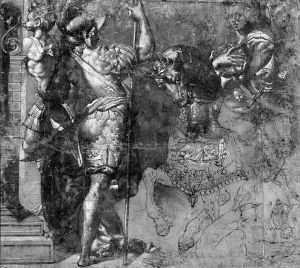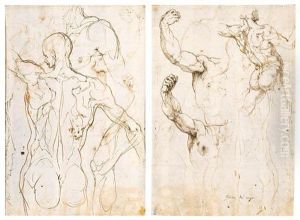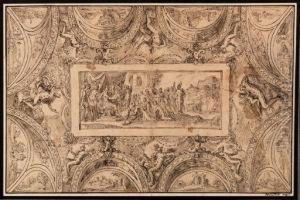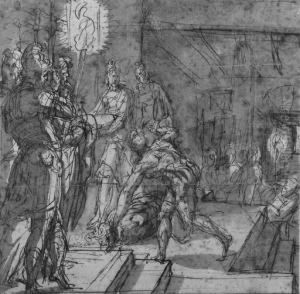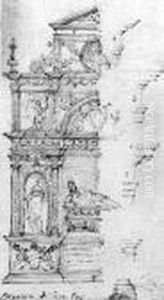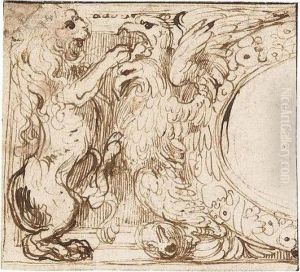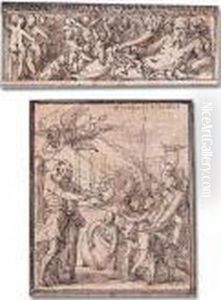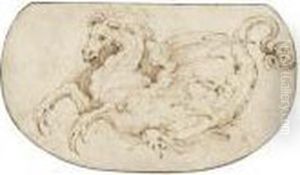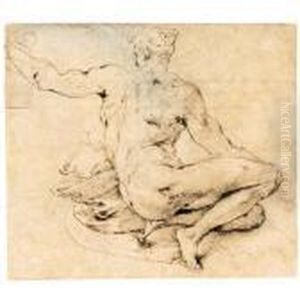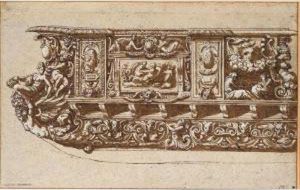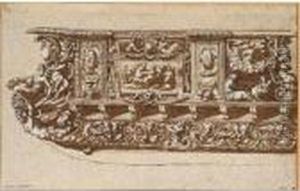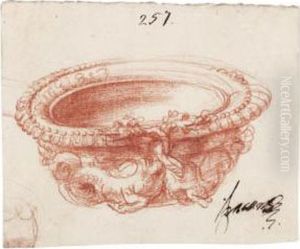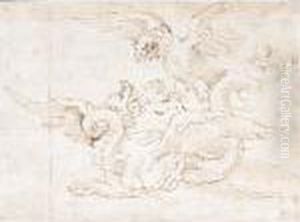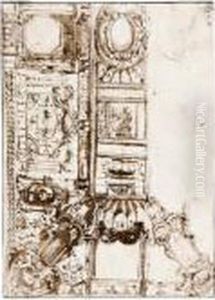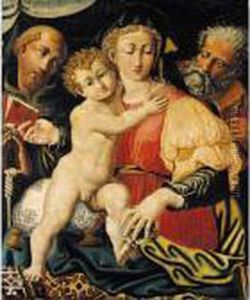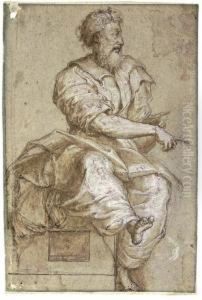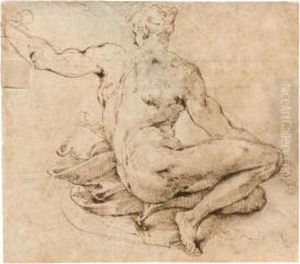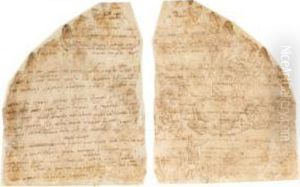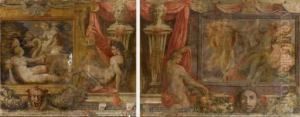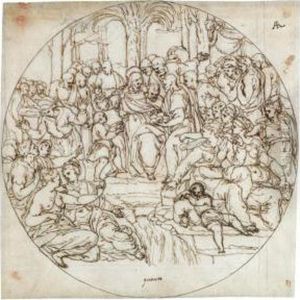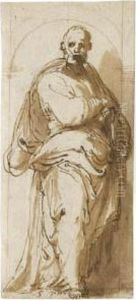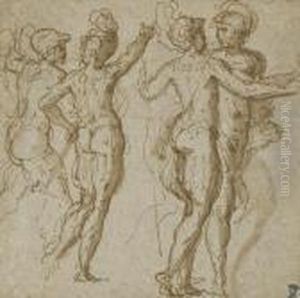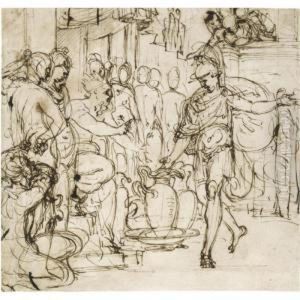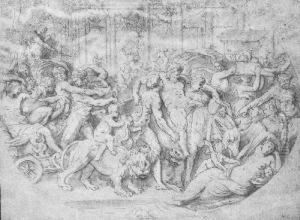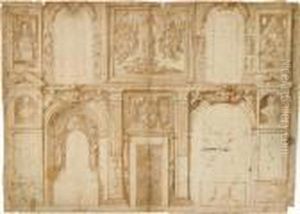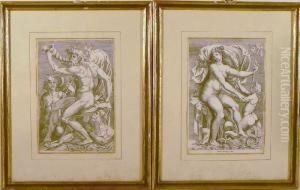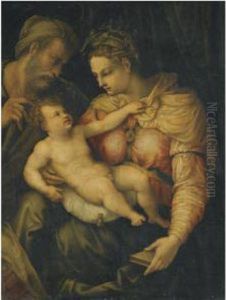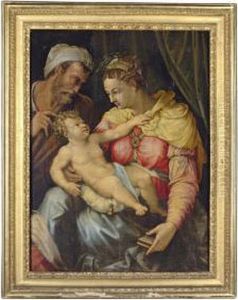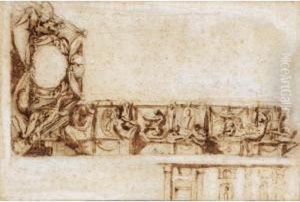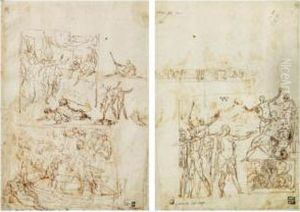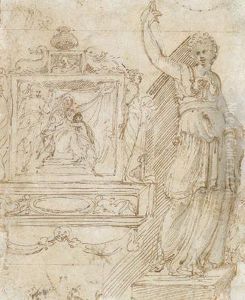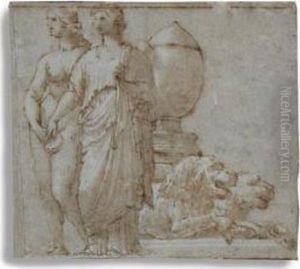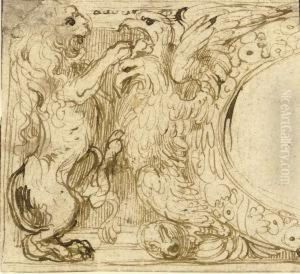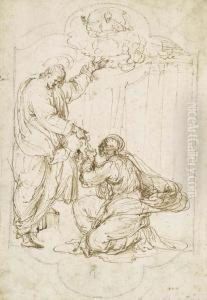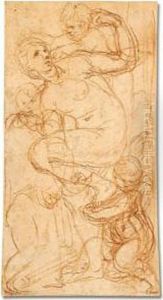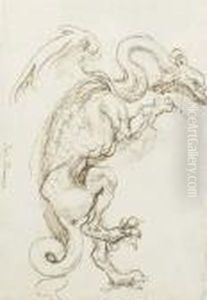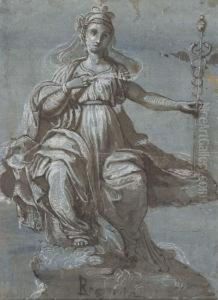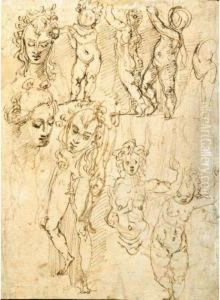Perino Del Vaga (Pietro Bonaccors Paintings
Perino del Vaga, born Pietro Buonaccorsi on June 28, 1501, in Florence, Italy, was a notable painter and draftsman of the Italian Renaissance. His nickname 'Del Vaga' derives from his foster mother's name, who took care of him after the death of his parents. Perino received his initial training in the workshop of Ridolfo Ghirlandaio, where he would have been exposed to the Florentine tradition of painting, characterized by a focus on linear precision and clarity of form.
As a young man, Perino traveled to Rome, which proved to be a turning point in his career. In Rome, he became a disciple of Raphael, one of the foremost artists of the period. Working in Raphael's studio, Perino was involved in some of the most prestigious projects of the time, including the decoration of the Vatican loggias. After Raphael's death in 1520, Perino completed some of his master's commissions and began to develop his own style, which blended Raphael's grace with a more energetic and expressive approach.
Perino's career was interrupted by the Sack of Rome in 1527, during which he was temporarily imprisoned. After his release, he moved to Genoa, where he became a leading artist at the court of Andrea Doria, a powerful naval admiral and statesman. In Genoa, Perino's work included designing decorations for Doria's palace and creating a series of frescoes, which are considered some of his finest work. These works illustrate his mastery of large-scale compositions and his ability to integrate architecture with pictorial design.
In 1538, Perino returned to Rome, where he received important commissions from the papacy and other patrons. He worked on the Castel Sant'Angelo and the Vatican Palace, among other sites. His late work is noted for its Mannerist qualities, characterized by complex compositions, elongated figures, and a departure from the balanced harmony typical of the High Renaissance.
Perino del Vaga died on October 19, 1547, in Rome. His legacy includes not only his own works but also his influence on other artists. As a teacher, he contributed to the training of a number of significant Mannerist painters, ensuring the continuation of his stylistic innovations. His drawings, widely circulated and admired, played a crucial role in the dissemination of the Roman style across Italy and beyond.
